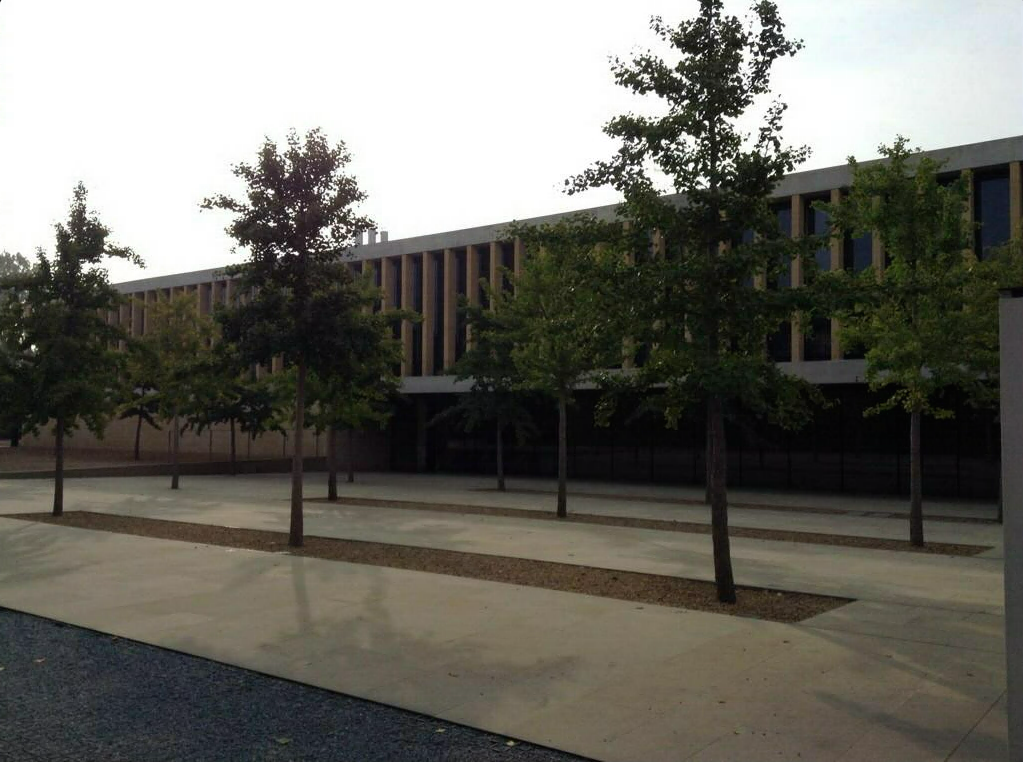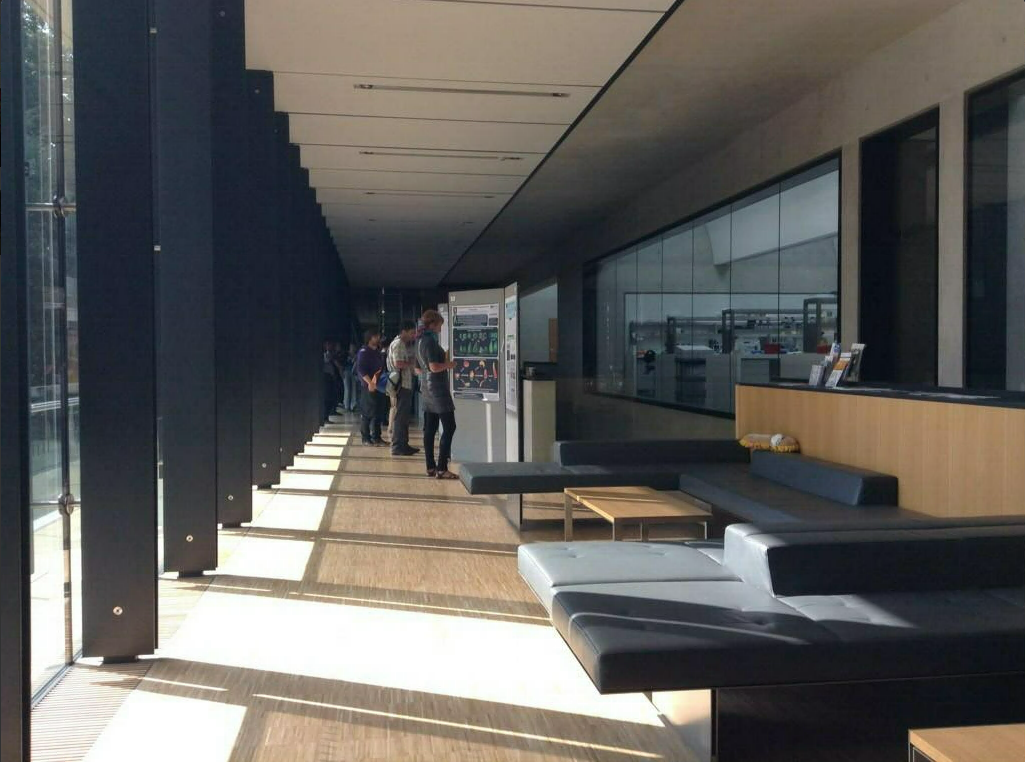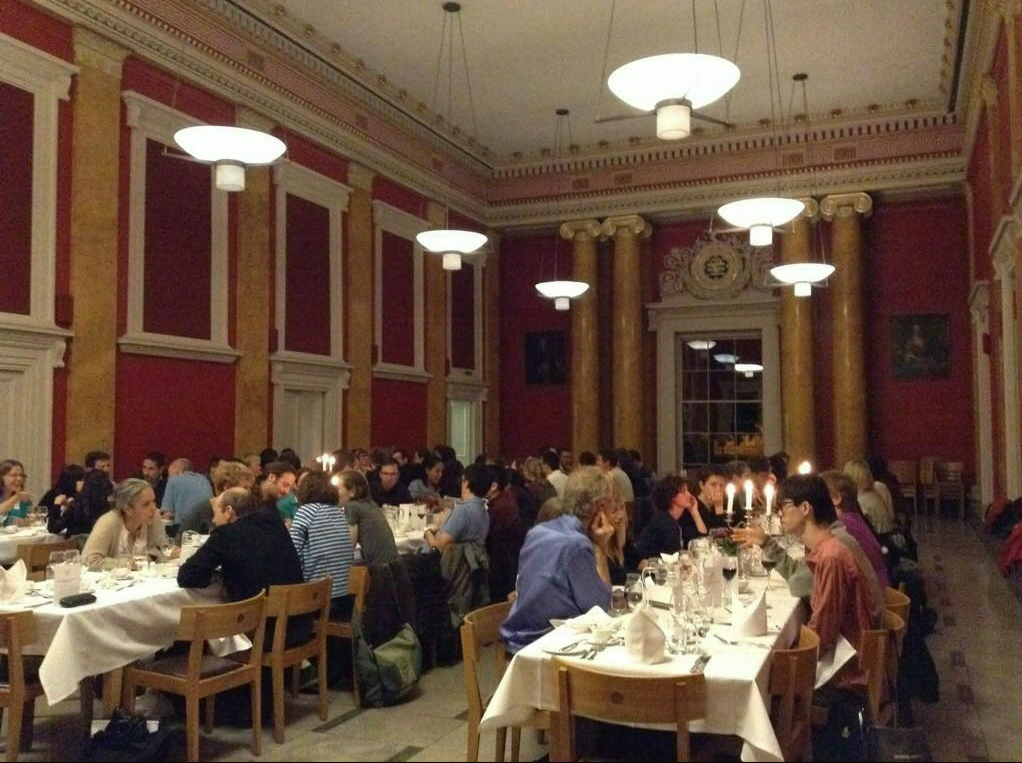Crossing fields- EMBO conference on interdisciplinary plant development
Posted by Catarina Vicente, on 8 October 2014
There is something exciting about biologists joining forces with physicists and/or mathematicians, and finding a common language to solve biological problems that are just too complex to understand without stepping outside the realm of ‘traditional’ biology. At the recent EMBO conference on plant development, interdisciplinary studies were the main focus. And as the organiser of the meeting, Ottoline Leyser, stated ‘developmental biology is at the vanguard of this revolution because of its inherently multiscale focus’.
The location of the conference was the Sainsbury Laboratory, a new institute at the University of Cambridge in the UK (so not so far from the Node office!). This was a perfect location for the meeting. The Sainsbury Laboratory focuses on interdisciplinary plant developmental biology (the conference organisers is also the director the institute!) and is set in the grounds of the Cambridge University Botanical Gardens, where the beauty of the plant world is in display. Indeed, tours of the gardens where available at the end of the meeting, although unfortunately I didn’t have the opportunity to join. Here, I will highlight a few of what I found the most exciting presentations at the meeting.
The Sainsbury Laboratory in Cambridge, UK
Although the keynote lecture that kicked off the meeting was interdisciplinary, it was not about plant development. Or indeed about plants at all. The first speaker was Kristian Franze (University of Cambridge), who works on neural development. Ottoline Leyser explained the rationale: many years ago she persuaded the organisers of the British Society for Developmental Biology meeting to include a pollen tube researcher in the neurobiology session. It is was time, therefore, the do the opposite. Kristian started his talk by drawing parallels. Ramification of branches in tree must involve forces. Neurons also undergo ramification, but the neuro field has not been as good as the plant field at appreciating the importance of forces in development. His talk focused on his lab’s work understanding the forces and mechanics underlying neural development. Another speaker in the session was Olivier Hamant (École Normale Supérieure Lyon); according to Ottoline: ‘you can’t possibly have a session on mechanical forces in plants without Olivier’. Using atomic force microscopy his lab was able to examine the stress pattern of pavement cells, and how the organisation of stress in these cells impact on the orientation of MTs (recently published in eLife).
In the ‘self-organising tissue systems’ session, Jennifer Nemhauser (University of Washington) took interdisciplinarity to the ultimate consequences. Interested in understanding how auxin signalling works, but limited by the redundancy and complexity of the pathway, Jennifer collaborated with an engineer at her university to create a synthetic system in yeast that recapitulates auxin signalling (published in PNAS). Her talk demonstrated the power of synthetic systems to provide insight into developmental processes.
Poster session in the corridors of the institute- you can see the labs on the right handside!
In the ‘self-organising cell systems’ session, Claire Grierson (University of Bristol) talked about the self organisation of root hair morphogenesis. Her talk ended on an emerging theme- the importance of studying developmental biology to understand (and modify) ecology and the environment. As she explained, 30% of arable land is lost due to soil erosion. Her lab is starting to focus on how root architecture can play a role in preventing this phenomenon. José Feijó (Gulbenkian Institute/ University of Maryland) works on pollen tubes, one of the fastest growing cells in nature. He showed some beautiful microscopy of these cells in action, and showed how calcium signalling is involved in pollen tube growth and morphogenesis (published in Science). Also in this session, Ray Goldstein (University of Cambridge) talked about cytoplasmic streaming, the persistent circulation of fluid in eukaryotic cells that is driven by molecular motors. Fluid mechanics plays an important role in understanding this process, and Ray made a good case for the contributions of maths and physics in understanding self-organising systems in nature.
In the ‘comparative approaches’ session, Ken Shirasu (RIKEN) focused on Striga, a parasitic plant with incredibly destructive effects on agriculture. Part of its success relies on the ability of the thousands of seeds that each plant produces to only germinate when within 1mm of a host plant (such as wheat). These parasites are then able to connect their vasculature with that of the host via the formation of a structure called the haustorium. His lab has established P. japonicum has a model to study this type of infection. Meanwhile, Angela Hay (Max Planck Institute, Cologne) tried to understand the biology and mechanics behind the explosive seed dispersal method used by C. hirsuta, which can launch seeds up to 2 metres from the mother plant. Finally, Steve Smith (University of Western Australia) talked about karrikins, compounds that are present in the soil following forest fires, and which are able to trigger germination and influence seed photomorphogenesis.
Interdisciplinary science can apply to many biological questions. This conference highlighted just that, with collaborations with other fields helping solve questions in a wide range of biological problems, from basic developmental questions to environmental problems and crop issues. Interdisciplinarity will probably have an increasingly strong presence in Biology, and this meeting shows that plant researchers are at the forefront of this new trend.
One of the conference’s dinners, at Downing college





 (1 votes)
(1 votes)